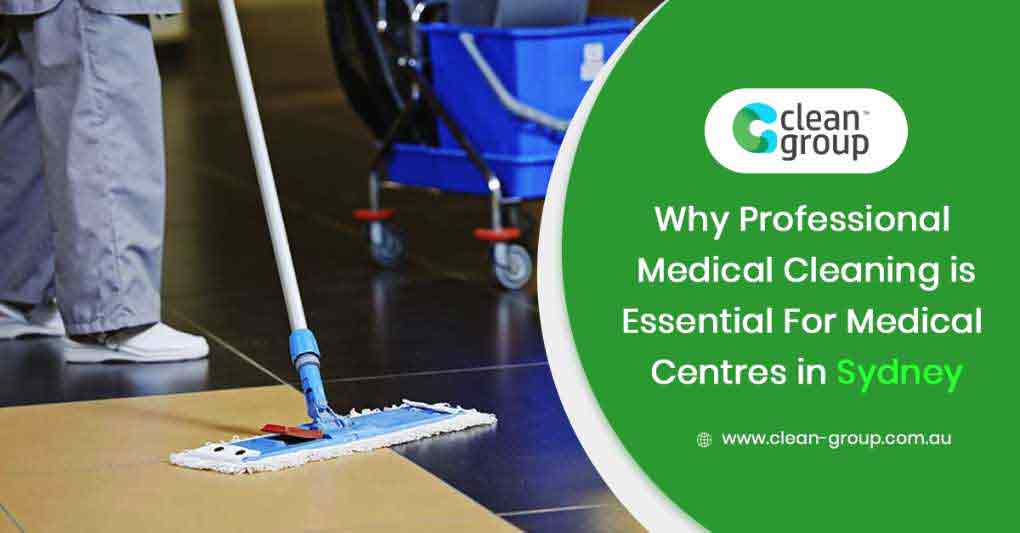It is no rocket science why healthcare facilities need to be immaculate when it comes to being clean and disinfected. A lot of unwell people go and trust hospitals and health centre with their well being. Medical cleaning is one of the largest branches of commercial cleaning. Your health and the duration for you to recuperate depends on the cleanliness and sanitation of your trusted medical facility.
The cleanliness of any healthcare environment is essential for infection prevention and control and patient well-being. Cleaners, along with healthcare professionals, play an indispensable role in quality improvement, in the confidence the public has in hospitals and healthcare, and in reducing infection-related risks.
The importance of medical cleaning highly depends on the commercial cleaner that a facility will choose to hire. There are a lot of commercial cleaners in Sydney that caters to this needs. Now that the world faces a pandemic, it will only make sense that medical cleaning demands are high.
1 out of every 20 people who end up in the hospital contract Healthcare-Associated Infection (HAI). According to the Centre for Disease and Control, 99,000 people die as a result of HAI annually.
These infections can be stopped. The Centre for Disease and Control makes it clear that cleaning and disinfecting environmental surfaces in healthcare facilities can significantly reduce the spread of infections.
10 Most Common Pathogens
Knowing the enemy is the first line of defence in keeping cross-contamination inside the hospital.
1. Klebsiella oxytoca
2. Coagulase-negative Staphylococci
3. Acinetobacter species
4. Staphylococcus aureus
5. Enterobacter species
6. Candida species
7. Klebsiella Pneumoniae
8. Escherichia coli
9. Pseudomonas Aeruginosa
10. Acinetobacter Baumannii
These pathogens include multi-drug-resistant pathogens like MRSA, VRE, and Ecoli.
Commercial cleaners who specialized in medical centre cleaning know products that can fight these pathogens. Healthcare cleaners use products that disinfects thoroughly enough to wipe out pathogens. This action is imperative in keeping infections out of the healthcare facility.
Steps in Proper Disinfection inside the Healthcare Facility
A critical step in properly disinfecting the workplace is knowing the level of the application needed for instrument and surface infection.
As represented in this table, high-level disinfectants are used for heat-sensitive, semicritical medical devices.
Intermediate disinfectants can be used on non-critical and environmental surfaces.
Low-level disinfectants can be used on non-critical instruments and environmental surfaces.
They have typically labelled hospital disinfectants without the tubercleosidle claim because they lack the potency to inactivate mycobacteria like TB.
Classification for Surface Disinfection
Mycobacteria, like TB, have the highest intrinsic level of resistance among all vegetative bacteria, viruses, and fungi. This means disinfectants with a TB claim on the label are considered capable of inactivating a broad spectrum of pathogens including much less resistant microorganisms such as blood-borne pathogens.
This full spectrum of capability is the basis for protocols and OSHA regulations that indicate the use of tubercolosidle chemicals for surface disinfection.
Step 1 – Cleaning
The first step in any disinfecting process is cleaning. The CDC states the actual physical removal of microorganisms and soil by wiping or scrubbing is as important as any antimicrobial effect of the cleaning agent used. What does this mean? It is simple.
Thoroughly clean surfaces before disinfecting and make sure all organic matter, salts, and visible soil are removed from all surfaces as the first step. This is your key to success.
Step 2 – Disinfecting
Make sure to use a fresh pre-saturated wipe or disinfectant liquid on surfaces but apply the disinfectant for the recommended contact time listed on the label. Remember to reapply if needed. Keep in on the surface for the recommended contact time.
On occasion, you may come across large volumes of spills or debris. If this happens, you need to remove blood or body substances promptly. Commercial cleaners should first remove visible organic matter with absorbent material. After that, clean and decontaminate the area as outlined on the table.
Advantages of Professional Medical Cleaning
Medical cleaning has so many challenges. This type of business requires unique attention to detail. It is optimal that these places are kept clean because many unwell people visited these places.
If you run this kind of business, you need to entrust these needs with professional facility cleaners who know how to handle medical cleaning. Here are a few benefits and advantages of medical cleaning:
Clean Image
Your image dictates your patient’s trust. You need to follow a specific protocol that speaks nothing but utmost hygiene. Most healthcare facilities operate 24/7; therefore, the parking lot, reception, and toilets are often used. The professional medical cleaning company’s duty is to keep all corners tidy and dust-free.
Prevent Infection
People seek medical attention because they are unwell. We cannot tell how many germs and viruses can a sick person spread in space. There are a lot of ways in which an infected person can contaminate and spread illness.
Professional medical cleaning companies know what type of cleaning chemicals and techniques to stop germs from spreading across all surfaces. Professional cleaners ensure that appropriate cleaning procedures are done to reduce the possibility of cross-contamination.
Get Rid of Blood Borne Pathogens
Have you ever wondered how to get rid of infection effectively? It would help if you made sure that there is no room for contamination in the medical centre. Contamination is handled by cleaning professionals with extreme care because it is dangerous to deal with blood pathogens.
They need to have the required knowledge. By hiring a professional medical cleaning provider, you will ensure the safety of everyone in the medical centre.
Improvement of Overall Health
A clean and well-disinfected hospital can shorten the stay of unwell patients. Study shows that surroundings affect the overall being of the patient who admitted themselves to the hospital to seek medical help. Only professional cleaners know how to take good care of the centre and achieve the result that a medical centre needs.
Best Practices When Cleaning and Disinfecting Medical Centre
Cleaning and disinfecting in health care facilities, including hospitals, clinics, and long-term and residential care centres require medical cleaners to have specialized training.
In addition to specialized training, professional medical cleaners should be able to demonstrate competency. This means being able to show the cleaning supervisor or the trainer that they can perform the practices correctly after being trained.
Healthcare facilities are different from other kinds of businesses when it comes to cleaning and disinfecting. The reasons for this include:
- harmful germs in these kinds of places are more common
- germs are difficult to remove or kill
- germs are invisible which makes it very hard to know if you have been successful
- patients and residents who stay in hospitals and other healthcare facilities are often ill, elderly and debilitated. This makes them more likely to catch an infection.
- patients have many more chances to be exposed to the germs that are found in their surroundings since they have frequent contact with healthcare workers
One fact that you need to know in the hands of healthcare workers is the most common way that germs can travel around medical facilities.
- The medical cleaner has to make sure that his cleaning cart is supplied correctly and organized. Clean things are physically separated from dirty items such as trash or used cleaning cloths.
- After the cart set-up is complete, the cleaner performs hand hygiene. Put on the disposable gloves and goes into the room to remove the trash and soiled linens.
- The cleaner removes the used gloves, washes hands, and applies new gloves. The cleaner then again will begin cleaning, making sure that it will be done from top to bottom, cleanest to dirtiest areas, moving in a clockwise or counterclockwise fashion around the room. This order will help the cleaner clean all the items that need to be cleaned and also to prevent cross-contaminating areas and items in the room.
- The cleaner is also expected to fold and refolds the microfiber cloth that is dampened with the approved disinfectant as he moved around the room for cleaning. This process also helps prevents cross-contamination by making sure the cleanest portion of the cloth is used as he cleans.
- The use of microfibre cleaning cloth is considered a gold standard in health care environmental cleaning by infection control. The technology of microfibre cloths significantly increases the germ removal ability over non-microfibre rags.
- The cleaner changes the cleaning cloths frequently when needed and never touches an infected area of the room with the same cloth that was used to clean a less infected area.
- Bathrooms are cleaned last since this space is considered the dirtiest. In the bathroom, commercial cleaners will begin with high to low cleaning and then moves from the cleanest area to the dirtiest. The last thing a cleaner would do after cleaning and disinfecting the toilet is to mop the floor with a disinfectant.
- Medical cleaners have a particular cleaning routine. This routine will help assure that they will not miss an area or contaminate areas while cleaning.
Remember that the germs that are working to kill are invisible; that is why it is vital that the medical cleaner follows the facility policies and does not miss any steps when performing their cleaning duties.
We believe that sharing is caring. Please share this article with your social media accounts for us to influence more people into the cleaning business.

